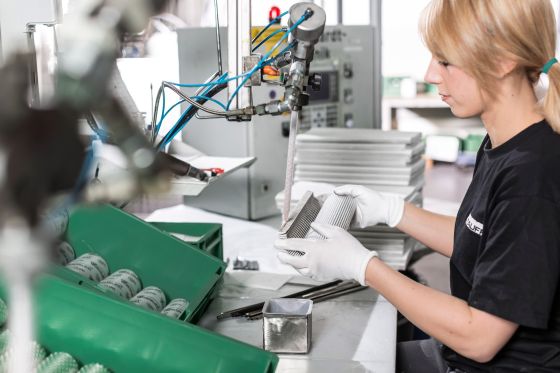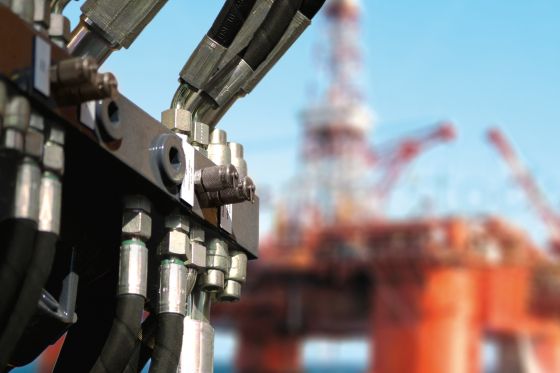High quality filtration systems have increasingly gained importance due to its ability to better facilitate cleanliness all throughout fluid systems. When there is a reduction of contamination in a hydraulic system, there is a paralleled reduction of wear and tear, thus resulting in lower maintenance costs and increased productivity. Contamination can be generated during the manufacturing of hydraulic components, which can put fluid systems at risk creating irreversible damage, hindering the integrity of the entire system.
Solid particles, free and dissolved water, and non-dissolved water are the most frequent types of contaminants found within hydraulic circuits. When contaminants infiltrate a hydraulic system they can lead to corrosion, leakage, component failure, and system failure. This can create a less productive hydraulic system that increases costs, or it can lead to the system failing resulting in unforeseen downtime of the entire hydraulic system. Many of these contaminants can be removed with proper filtration methods.
Hydraulic filters are essential components for a variety of hydraulic systems. Hydraulic filters ensure cleanliness and purity in a system’s hydraulic fluid before distributing it throughout the entire hydraulic circuit. It removes contaminates from oil and other hydraulic fluids that can create damage to the system. STAUFF offers different types of filters for many different types of hydraulic systems.

STAUFF Filtration Product Range:
- Pressure Filters: Pressure Filters are designed to clean hydraulic oil before it flows through down-stream components such as valves and cylinders. They are placed behind the system pump and are sized to handle the specific flow of the system’s pressure.
- Return-Line Filters: Return-Line Filters are installed on the return line or inside the tank of a hydraulic system. They are designed to remove contaminants from the hydraulic oil before it is returned to the reservoir. They are low pressure filters that aid in maintaining the fluids purity class.
- In-Line Filters: In-Line Filters are installed directly on the fluid line and are designed to remove particles from the hydraulic fluid. When they are suction side, they can only filter low pressure fluids, however when placed pressure side they can filter high pressure fluids.
- Spin-On Filters: Spin-On Filters are made of aluminum and are used in low to medium pressure hydraulic systems to protect individual components from damage from contamination. These filters are easy and quick to replace, making them cost effective.
- Off-Line Filters: Off-Line Filters are used to supplement the main systems filter and are not part of the main hydraulic system. It is a separate pump and filter used for low pressure fluids. The integrated pump unit draws fluid out of the tank, filters it and pumps clean fluid back into the system. Off-Line Filters can continue to work even if the main system is not in use.
- Bypass Filters: Bypass Filters, similar to Off-Line Filters, are not part of the main hydraulic system. Theya re supplementary to ensure the best filtration possible. They use the existing system pressure to draw a small volumetric flow out of the hydraulic system for filtration. They are only active while the system is operating.
In order to maintain a proper functioning hydraulic system it is critical to implement routine maintenance practices that will aid in upkeep and reduce maintenance costs. Conducting regular inspections of hydraulic systems is a simple and clear way to visibly identify potential system problems. This can be looking for signs of leakages, corrosion, or contamination or audibly recognizing unfamiliar noises. Monitoring system efficiency and fluid temperature and pressure levels can help detect early signs of contamination to help stop system degradation. If a hydraulic system becomes sluggish and inconsistent, this could be a sign of contamination and needs to be further inspected. Regularly monitoring fluid temperature and pressure levels are an indicator of system health and can be helpful parameters to identify when the system is compromised.
Component and filter quality can drastically impact a hydraulic system. When high-quality components and filters are used hydraulic systems life span extends, costs are reduced due to less downtime, and productivity increases. STAUFF offers high quality hydraulic components with a leak-free guarantee. With innovation and customer satisfaction at the cornerstone of STAUFF Research and Development, all components and services are being innovated and redesigned to ensure that they meet industry and customer standards, wants, and needs. Finding a filter that corresponds with a hydraulic system can be difficult, that is why STAUFF created the Filter Interchange website. Here, a customer can search for replacement filter elements, generate and submit inquires, and save search results. STAUFF also offers the Online Filter Calculator to help find the exact filter for any hydraulic system. If extra support is needed, connect with a STAUFF Customer Service Representative. Allow STAUFF to help you feed, move and power the world!
Newsletter Subscription
Receive automatic e-mail notifications about new posts on the STAUFF Blog






